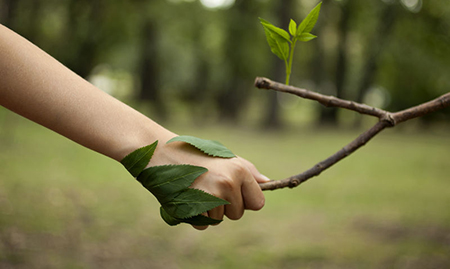Today, I am going to talk about content. Indeed, environment offers a vast field of investigation, all punning aside:) From climate change to biodiversity, so many paths can be taken.
A word from the president
It does not make sense to initiate a product communication if your company as a whole and your president in particular are not committed to achieving objectives in terms of environment. Sorry for my US friends… To clarify your engagement, you can refer to the UN’s Sustainable Development Goals. They can easily be linked to your corporate strategy. Joining the Global Compact is also a good way to assess a company’s engagement to protect the planet for future generations. Then, according to your market and your target audiences, you can choose to communicate on various themes:
Climate Change
The first subject that comes to mind when communicating on the environment is obviously climate change. Companies , such as Danone, can fund compensation programs to become carbon neutral. An added benefit: it also helps to cut down on taxes at least in Europe. But all business types, whether processing goods or developing services, can take action to reduce greenhouse gas emissions. For instance, if you are operating in the insurance business, you may want to offer a discount for people using hybrid or electric vehicles.
Resource Scarcity
Reducing the use of natural raw materials is the first element to underline. You can start by reducing the water use in your production process. But you can also communicate on a partnership with local communities of farmers to sustainably supply sensitive resources such as cocoa beans or vanilla for instance.
Setting up a circular economy approach can be an effective way for communicating on the environment. However, the message can be quite complex to convey if your business model is not fully based on recycling and reusing raw materials. See the example of SEB in the previous article. What part of your product is recyclable? Is your product using recycled materials?
Protecting Biodiversity
Consumers around the world are increasingly aware of the need to protect biodiversity. It is a great communication topic as you can use amazing pictures of landscapes, plants or animals. But the link between biodiversity and your product must be clear. For instance the cosmetic industry is legitimate to preserve plant species used for specific fragrance or actives. Guerlain, for instance is actively supporting the preservation of black bees from the Ouessant Island. Why is that? Because they produce a specific royal jelly used in one of their best-selling anti-wrinkle cream. Check their video below and tell me biodiversity is not an awesome brand image tool for an organization!
Safety check
However, beware of oversimplifying topics that can be quite complex such as reduction of emissions or avoided emissions for instance. In this respect, it is essential to take the level of maturity of your target audiences into account. And of course, whether you are addressing investors, customers or end consumers, you will not communicate the same way, nor use the same tools (but that’s for the next article).
In the end, whatever environmental theme you choose to develop, you should always test your communication options with a panel of stakeholders. It will help you evaluate the risks you are taking, mitigate them and avoid any misunderstanding or interpretation issues.
Coming soon : Far from greenwashing: The tools for an effective communication
